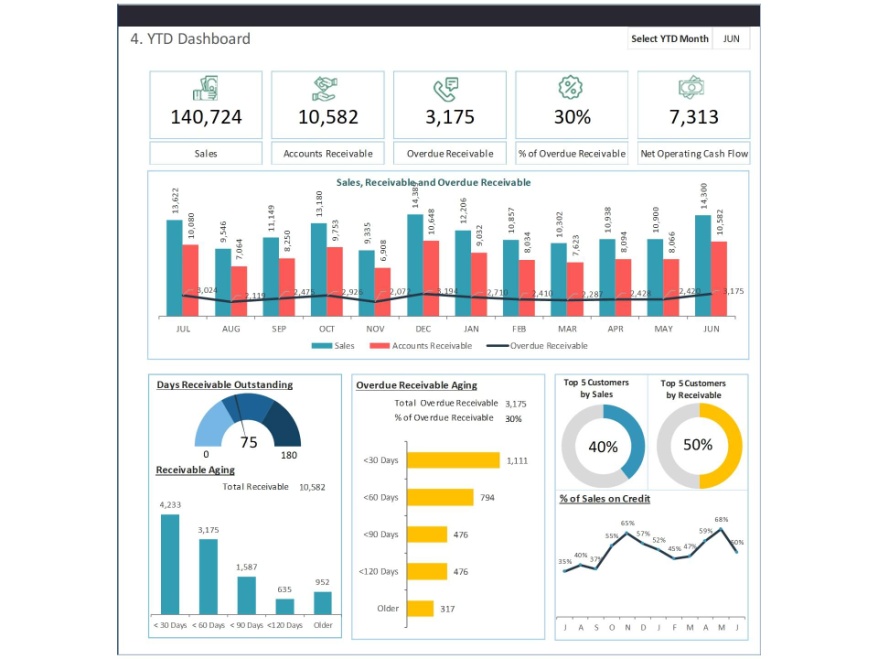Whether small, medium, or large, every business has to report its seasonal profit, losses, and revenue. Financial reporting helps businesses understand where their profitability index is heading and enables them to compare their performance and take corrective measures. It’s also a significant compliance requirement. Your potential investors, clients, and other stakeholders need to go through your financial reports to decide whether they’ll be interested in investing.
Financial dashboards have a major role to play. Here’s how:
The ability to visualize data
To understand performance metrics, financial experts and analysts need a lot more than just columns and rows of raw data. In order to make financial decisions, they need to know what the data is indicating. This is where visuals, charts, and graphs come into play.
When you’re reporting your bottom line for a certain year, your stakeholders want to look at a lot more than just the numeric value. It always helps to see how the bottom line fared compared to the previous years and how it gradually improved to where it is now. The right kind of representation helps them take appropriate action. Visuals also enable financial analysts to take quick appropriate actions. The graphs make it easy for them to visualize a large amount of data rather than running through extensive spreadsheets.
Tell a story
Dashboards come with a wide range of features that facilitate storytelling with numbers. Your financial analysis not only needs to be accurate but thoughtful as well. This helps you interact with the numbers. For instance, when you analyze variances, a dashboard helps you look beyond the mean variances. It highlights any significant departure from the budgetary values.
When you look at the dashboard that compared your budget values with actual performance, you get to understand where these variances took place. Variance analysis helps you make the right decision—far beyond the obvious financial trends. Dashboards help you answer some of the important questions, such as ‘our income appears to be more seasonal; why could that be so?’ and ‘why did our actual revenue not meet the expectations set by the budget?’
Ensures across the board participation
Dashboards are highly shareable. This means that you can share them across the team and garner feedback from each member. This paves the way for engagement and shared financial comprehension among the board members. This also prevents a difference in how the board members and other professionals are treated in terms of information semination.
The dashboard also gives your board members something to talk about, given the fact that it creates a common language. The dashboard serves as a useful piece of information that is appropriate, relevant, and something that they are familiar with. With concrete financial data in their hands, the board members are better able to communicate.
Biz Infograph offers a number of pre-designed, eye-catching, and detailed financial dashboard templates for your business. Take a look and see how you can use these dashboards templates to take your financial reporting one notch up!
